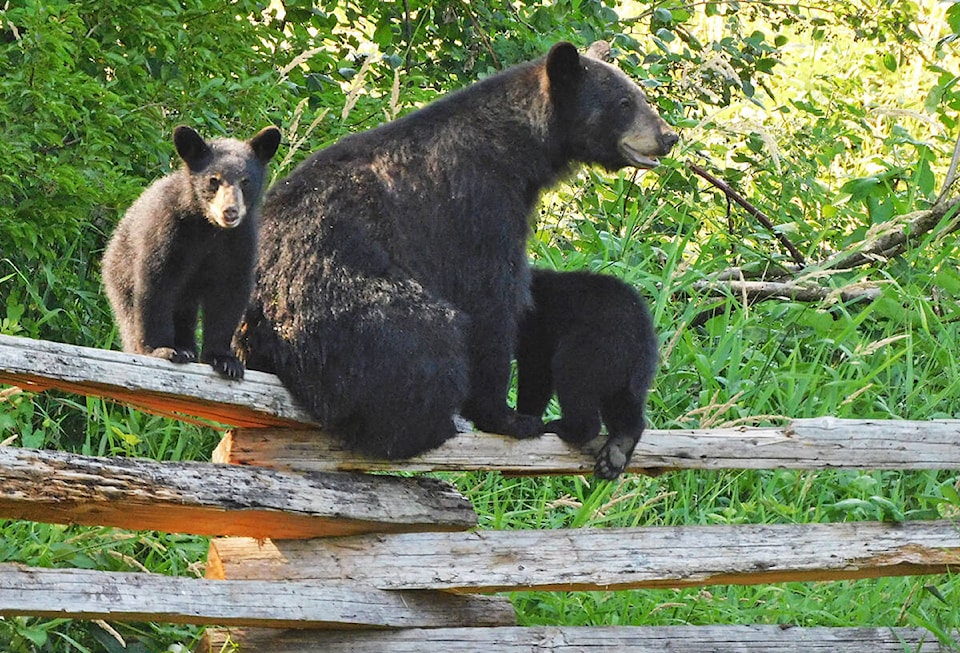Bears are pretty clever animals, as anyone who has ever seen them hunt down a delicious bit of food can attest.
The problem is that for bears, “delicious” can mean anything from an uncleaned backyard barbecue grill, to an unsecured trash bin or compost box, to fallen apples in a suburban back yard.
When bears interact with humans, most of the time it’s because humans create a lot of opportunities for snacking.
But when those interactions go wrong, it’s not the humans who suffer. It’s the bears.
Data obtained by the Fur-Bearer Society revealed that over the last several years in B.C. an average of 540 black bears were killed annually by officers with the B.C. Conservation Officers Service.
Those officers don’t want to shoot bears.
They’d much rather trap and relocate them, or even better, simply get people to secure their trash, their compost, their barbecues, and their backyard fruit trees.
But when bears become habituated to human sources of food, and to human beings more generally, they can become dangerous. And bears don’t get a vote in what happens next.
READ ALSO: OUR VIEW: Paramedic shortage is a black eye for NDP government
READ ALSO: VIDEO: Black bear plays in B.C. M.P.’s bird bath
Maple Ridge and Pitt Meadows are towns where the vast majority of people are very bear aware. These are communities that back onto mountains and bog and wilderness, and have always had more bears than communities like Surrey or Burnaby.
But there are always people who are new to the community and haven’t learned yet, or who simply think they know better. Then the bears will come around, simply following their instincts to grab a quick meal and fatten up for winter.
Whether it’s campers leaving food waste behind in the woods, or hobby farmers whose livestock isn’t properly secured, or even someone who wants a friendly relationship with their local wildlife and actually feeds the bears, it only takes one problem human to create a problem bear.
Conservation Officers undertake attractant surveys and do a lot of public education as part of their duties.
Those who live farther out into the suburbs and rural areas have a greater chance of interacting with bears, and have a higher degree of responsibility for taking care.
But even in urban areas, a bear may wander in, so everyone has to be alert.
In the end, bears wind up being shot because they can legitimately pose a danger to human beings. They may be omnivorous, and seldom aggressive, but they’re among the biggest predators in North America. We all have to take care not to put them, or us, in danger.
